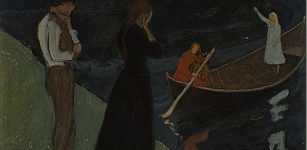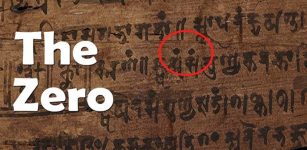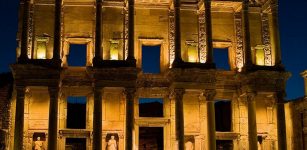Mythical Egyptian Bennu Bird And Deity
A. Sutherland - AncientPages.com - The Bennu is an ancient Egyptian deity linked with the sun, creation, and rebirth. It may have been the inspiration for the phoenix in Greek mythology.
According to Egyptian mythology, the Bennu was a self-created being. This being played a role in the creation of the world. It was said to be the ba of Ra and enabled the creative actions of Atum.
According to Egyptian mythology, the Bennu was a self-created being. The Egyptian meaning of the Bennu is 'palm tree' and also 'purple heron'. This bird is clearly associated with the Phoenix and its legend is associated with the Bennu. The Bennu bird has red and golden plumage and is the sacred bird of Heliopolis, one of the oldest cities of ancient Egypt. Sacred Bennu has been also interpreted as the reincarnation of the Gods Ra and Osiris. Heliopolis is referred to as the City of the Sun and is known as one of the oldest Egyptian cities.
The ancient Egyptians believed the Bennu created itself from a fire that burned upon a holy tree in the temple of Ra and yet others believed that it exploded from the heart of Osiris.
It was said to have flown over the waters of Nun that existed before creation, landing on a rock and issuing a call that determined the nature of creation. It was also a symbol of rebirth and was therefore associated with Osiris.
Some of the titles of the Bennu bird were "He Who Came Into Being by Himself", and "Lord of Jubilees"; the latter epithet referred to the belief that the Bennu periodically renewed itself like the sun. Its name is related to the Egyptian verb wbn, meaning "to rise in brilliance" or "to shine".
The Pyramid Texts refer to the yellow wagtail as a symbol of Atum, and it may have been the original form of the Bennu bird. New Kingdom artwork shows the Bennu as a grey heron with a long beak and a two-feathered crest, sometimes perched on a benben stone (representing Ra) or in a willow tree (representing Osiris). Because of its connection with Osiris, it sometimes wears the atef crown.
‘Benu’-bird (the Phoenix). Inerkhau ("Onuris appears" - Onuris was a Greek inflection of the name of the god Iny-Hor) who was the son of Hay and his wife was named Wabet. - here: worshipping the Benu-bird, the sacred phoenix wearing the Atef-Crown. Bennu bird - a symbol of resurrection.
A large species of heron, currently extinct, lived on the Arabian Peninsula in comparatively recent times; it may have been the ultimate inspiration for the Bennu. Reflecting this, the species was described as the Bennu heron (Ardea bennuides). Like Atum and Ra, the Bennu was probably worshipped in their cult center at Heliopolis. It also appears on funerary scarab amulets as a symbol of rebirth.
According to the Greek historian Herodotus, who wrote about Egypt in the fifth century BC, the priests at Heliopolis described the phoenix to him. They said it lived for 500 years before building its own funerary pyre and setting it alight.
The newborn offspring of the previous phoenix rose from the ashes of this fire and carried them to Heliopolis, depositing them on the temple's altar. Greek descriptions of the phoenix liken it to an eagle with red and gold plumage, reminiscent of the sun or of flames.
The name of the phoenix could be derived from "Bennu", and its rebirth and connections with the sun resemble those of the Bennu bird, although Egyptian sources do not mention the bird's death.
Written by A. Sutherland - AncientPages.com Staff Writer
Copyright © AncientPages.com All rights reserved. This material may not be published, broadcast, rewritten or redistributed in whole or part without the express written permission of AncientPages.com
More From Ancient Pages
-
 Rare Magic Mirror In Cincinnati Museum Has A Secret Hiding In Plain Sight
Artifacts | Jul 19, 2022
Rare Magic Mirror In Cincinnati Museum Has A Secret Hiding In Plain Sight
Artifacts | Jul 19, 2022 -
 Daily Life Of Priests And Priestesses In Ancient Egypt
Ancient History Facts | Apr 5, 2018
Daily Life Of Priests And Priestesses In Ancient Egypt
Ancient History Facts | Apr 5, 2018 -
 Ancient Astronomical Symbols At Göbekli Tepe Confirm A Comet Swarm Struck The Earth 11,000 B.C.
Archaeology | Apr 23, 2017
Ancient Astronomical Symbols At Göbekli Tepe Confirm A Comet Swarm Struck The Earth 11,000 B.C.
Archaeology | Apr 23, 2017 -
 Early European Farmers Traced To Anatolia, DNA Study Shows
Archaeology | Jan 5, 2016
Early European Farmers Traced To Anatolia, DNA Study Shows
Archaeology | Jan 5, 2016 -
 Silver Offers Evidence Viking Age Started Much Earlier Than Previously Thought – Archaeologist Says
Archaeology | Nov 7, 2023
Silver Offers Evidence Viking Age Started Much Earlier Than Previously Thought – Archaeologist Says
Archaeology | Nov 7, 2023 -
 Vikings’ Self-Image Was Influenced By Ancient Rome – Intriguing Grave And Artifacts Reveal
Archaeology | Oct 18, 2022
Vikings’ Self-Image Was Influenced By Ancient Rome – Intriguing Grave And Artifacts Reveal
Archaeology | Oct 18, 2022 -
 Tuonela – The Land Of The Dead In Beliefs Of Ancient Finnish People
Featured Stories | Nov 9, 2021
Tuonela – The Land Of The Dead In Beliefs Of Ancient Finnish People
Featured Stories | Nov 9, 2021 -
 Race Against Time: Crucial Expedition To Delve Into Bouldnor Cliff, Europe’s Mesolithic Underwater Stone Age Site
Underwater Discoveries | Apr 28, 2024
Race Against Time: Crucial Expedition To Delve Into Bouldnor Cliff, Europe’s Mesolithic Underwater Stone Age Site
Underwater Discoveries | Apr 28, 2024 -
 Exciting discoveries made by archaeologists in Laconia
News | Aug 25, 2015
Exciting discoveries made by archaeologists in Laconia
News | Aug 25, 2015 -
 First Kisses May Have Helped Spread Oral Herpes 5,000 Years Ago – Scientists Say
Archaeology | Jul 30, 2022
First Kisses May Have Helped Spread Oral Herpes 5,000 Years Ago – Scientists Say
Archaeology | Jul 30, 2022 -
 On This Day In History: Bolsheviks Executed Aleksandr Kolchak, A Navy Officer And Explorer Of The Arctic – On Feb 7, 1920
News | Feb 7, 2017
On This Day In History: Bolsheviks Executed Aleksandr Kolchak, A Navy Officer And Explorer Of The Arctic – On Feb 7, 1920
News | Feb 7, 2017 -
 Secrets Of The Lost Tomb X – Mysterious Manuscripts And Strange Engravings – Part 1
Ancient Mysteries | Apr 9, 2019
Secrets Of The Lost Tomb X – Mysterious Manuscripts And Strange Engravings – Part 1
Ancient Mysteries | Apr 9, 2019 -
 Why Was The Medieval Town Of Wagrain Suddenly Abandoned 1,300 Years Ago?
Archaeology | Oct 7, 2024
Why Was The Medieval Town Of Wagrain Suddenly Abandoned 1,300 Years Ago?
Archaeology | Oct 7, 2024 -
 Is The World’s Oldest Zero Hidden In The Bakhshali Manuscript?
Archaeology | Oct 28, 2017
Is The World’s Oldest Zero Hidden In The Bakhshali Manuscript?
Archaeology | Oct 28, 2017 -
 City Of Ephesus And Celsus Library With More Than 12,000 Scrolls
Featured Stories | Sep 17, 2015
City Of Ephesus And Celsus Library With More Than 12,000 Scrolls
Featured Stories | Sep 17, 2015 -
 Escape Tunnel From Crusader Citadel In Tiberias To Sea Of Galilee – Discovered
Archaeology | Jun 15, 2017
Escape Tunnel From Crusader Citadel In Tiberias To Sea Of Galilee – Discovered
Archaeology | Jun 15, 2017 -
 Rare 2,700-Year-Old Seal Of Biblical King Jeroboam II’s Servant Confirmed Authentic
Artifacts | Jan 18, 2021
Rare 2,700-Year-Old Seal Of Biblical King Jeroboam II’s Servant Confirmed Authentic
Artifacts | Jan 18, 2021 -
 Ancient Mysteries In The Amazon Jungle – Strange White Men With Glowing Eyes – Part 1
Ancient Mysteries | May 28, 2018
Ancient Mysteries In The Amazon Jungle – Strange White Men With Glowing Eyes – Part 1
Ancient Mysteries | May 28, 2018 -
 ‘Impossible’ Advanced Ancient Technology In Mesopotamia – Evidence Of Other-Worldly Interaction?
Ancient Mysteries | May 24, 2021
‘Impossible’ Advanced Ancient Technology In Mesopotamia – Evidence Of Other-Worldly Interaction?
Ancient Mysteries | May 24, 2021 -
 New Evidence Vikings Failed To Wipe Out Communities And Anglo-Saxon Monasteries
Archaeology | Jan 30, 2023
New Evidence Vikings Failed To Wipe Out Communities And Anglo-Saxon Monasteries
Archaeology | Jan 30, 2023



